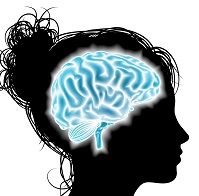Article
Auditory Hallucinations Are Complex Phenomena
Author(s):
Study shows that the majority of people who report "hearing voices" actually hear multiple distinct voices, and that many patients also report physical effects from their condition.

British researchers, who conducted what they believe to be the largest mixed-methods investigation of auditory hallucination phenomenology to date, found that the majority of voice-hearers hear multiple voices with distinct character-like qualities. Published in The Lancet Psychiatry, the study also found that many patients—both with and without psychiatric diagnoses—who hear voices also experience physical effects on their bodies.
Auditory hallucination are common to many psychiatric disorders, including psychosis, schizophrenia, and bipolar disease, and are also experienced by those without psychiatric conditions. In fact, an estimated 5% to 15% of adults will hear voices during their lifetimes. Although understanding the variation in subjective experiences of hallucination is central to psychiatry, “systematic empirical research on the phenomenology of auditory hallucinations remains scare,” wrote the study authors.
For the study, Angela Woods, PhD, Centre for Medical Humanities and School of Medicine, Pharmacy and Health, Durham University, Durham, UK, and colleagues sought to “record a detailed and diverse collection of experiences, in the words of the people who hear voices themselves.”
A 13-item questionnaire featuring a combination of open- and closed-ended questions was made available online for 3 months. In order to elicit phenomenologically rich data, the questions drew on service-user perspectives and approaches from phenomenological psychiatry, psychology, and medical humanities. People aged 16 to 84 years with experiences of voice hearing were invited to take part in the study via an advertisement that was circulated through clinical networks, hearing voices groups, and other mental health forums.
Of the 153 participants who completed the study, the large majority described hearing multiple voices (81%) with characterful qualities (69%). Less than half of participants reported hearing literally auditory voices, with 46% reporting either thought-like or mixed experiences, a finding that conflicts with the common view that auditory hallucinations are a solely perceptual or acoustic phenomenon. What’s more, 66% of participants reported bodily sensations, such as feeling hot or tingling sensations in their hands and feet, while they heard voices. These sensations were significantly associated with experiences of abusive or violent voices, and were sometimes linked to experiences of trauma.
Whereas depression, stress, anxiety, and fear were often associated with heard voices, 31% of participants reported that they felt positive emotions and 32% reported neutral emotions. Mixed voices “were more likely to have changed over time, be internally located, and be conversational in nature,” wrote the authors.
Co-author Nev Jones, PhD, Department of Anthropology, Stanford University, said “Our findings regarding the prevalence and phenomenology of non-acoustic voices are particularly noteworthy. By and large, these voices were not experienced simply as intrusive or unwanted thoughts, but rather, like the auditory voices, as distinct ‘entities’ with their own personalities and content. This data also suggests that we need to think much more carefully about the distinction between imagined percepts, such as sound, and perception.”
Woods added, “Our findings have the potential to overturn mainstream psychiatric assumptions about the nature of hearing voices. We call into question the presumed auditory quality of hearing voices and show that there is an unrecognized complexity in the 'character' qualities of some voices.”
She also said it is crucial to study mental health and phenomenon such as auditory hallucinations “from a variety of different perspectives to truly find out what people are experiencing, not just what we think they must be experiencing because they have a particular diagnosis. We hope this approach can help inform the development of future clinical interventions.”




